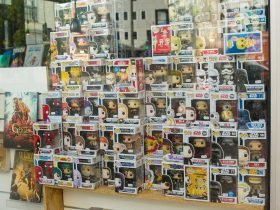Founded in Ginza, Japan, in 1893, Mikimoto is a high-end jeweler that specializes in cultured pearls. Industry experts and consumers with an affinity for the stone worldwide often regard the brand as the top echelon of fine pearl jewelry, and its sophisticated pieces are considered collectibles that are passed down over generations.
The company’s founder, Kokichi Mikimoto, claims to be the first person to develop a technique for cultivating pearls. His method is still in use today.
It began as a small enterprise, but the jeweler quickly became popular throughout Japan for its elegant and timeless designs. But Mikimoto went beyond crafting jewels when he opened the Mikimoto Pearl Research Laboratory in the 1930s with the aim of having a space where his company could explore and stay at the forefront of pearl cultivation.
In 1899, the first Mikimoto pearl shop opened in the fashionable Ginza district of Tokyo, and the business expanded internationally in the early 20th century when it opened a boutique in London. In fact, Mikimoto was one of the first Japanese brands to gain international recognition.
Today, several celebrities are among the many Mikimoto fans: Jennifer Lopez wore a pair of its earrings and a pearl-and-diamond floral ring when she married Ben Affleck in 2022. Also, the singer Rhianna and actress Kerry Washington are just two of the many boldfacers who donned a Mikimoto piece to this year’s Met Gala in New York.
Currently, the company has several boutiques globally with flagship locations in New York and Ginza. Its pieces are also sold at high-end retailers including Saks Fifth Avenue and Net-A-Porter.
Despite its luxury status, Mikimoto is committed to culturing pearls in a sustainable way. Kentaro Nishimura, Mikimoto’s COO, says that the jeweler is trying to achieve zero emissions with respect to its farming.
“We need a healthy environment to harvest beautiful pearls from beautiful oysters, and we are constantly aiming to reduce our environmental footprint,” he says. “Without a healthy ecosystem, we won’t be able to harvest the high-quality oysters we need for our jewelry.”
THE ITEM
Mikimoto’s full line of pearl jewelry and accessories includes necklaces, earrings, rings, pendants, bracelets, picture frames, and candles. The company also creates non-pearl jewelry that features precious stones such as diamonds and sapphires.
THE PRICE
Prices range from US$540 for a single Akoya pearl earring stud to several millions of dollars for a one-of-a-kind high jewelry piece.
WHAT’S THE GOOD
Sustainability is a top priority for Mikimoto, according to Nishimura. “In our lab, we’re constantly researching how to preserve the marine environment to help the pearl industry as a whole,” he says. “This research includes the detection of red tide, oxygen deficiency, and other sea abnormalities, which minimizes the impact of fisheries, including oyster farms.”
When pearls are typically harvested to create jewelry, the shells and flesh get thrown away. The exception is the abductor muscles, which are considered a delicacy in Japan and eaten. Mikimoto, in collaboration with Mikimoto Cosmetics, recycles the shells and flesh of oysters and repurposes them in multiple ways. Components in the oysters such as collagen and conchiolin have a high protein content, and the company extracts them so that they can be used in vitamins that aim to promote healthy hair and nails.
In addition, Mikimoto reuses oyster shells to create jewelry and accessories such as picture frames or in farming to improve the quality of soil. Oyster meat residue sees a second life as compost.
In 2000, Mikimoto established the first pelagic fishery for wild Akoya oysters in Japan. “Ever since then, we have been working to conserve and restore wild oyster habitats,” Nishimura says.
WHAT’S NEXT
Mikimoto is celebrating its 130th anniversary this year. It’s a landmark moment, according to Nishimura, that serves as the opportunity to highlight the significance of sustainability to the company. “We are continuing to research how we can cut down our emissions even more,” he says. “Our lab is at the center of that research.”
Looking ahead, Nishimura says that the jeweler wants to strengthen its zero-emission pearl farming system that collects and recycles all waste from its process.
The brand’s anniversary campaign, “Love Letter to the Sea,” comprises f short videos that celebrate the setting where its pearls are harvested; they can be viewed on its website.
“If we can inspire even one individual to show more respect for the ocean and environment through our campaign and short films, it will all have been worth it,” Nishimura says.
Read the full article here











Leave a Reply